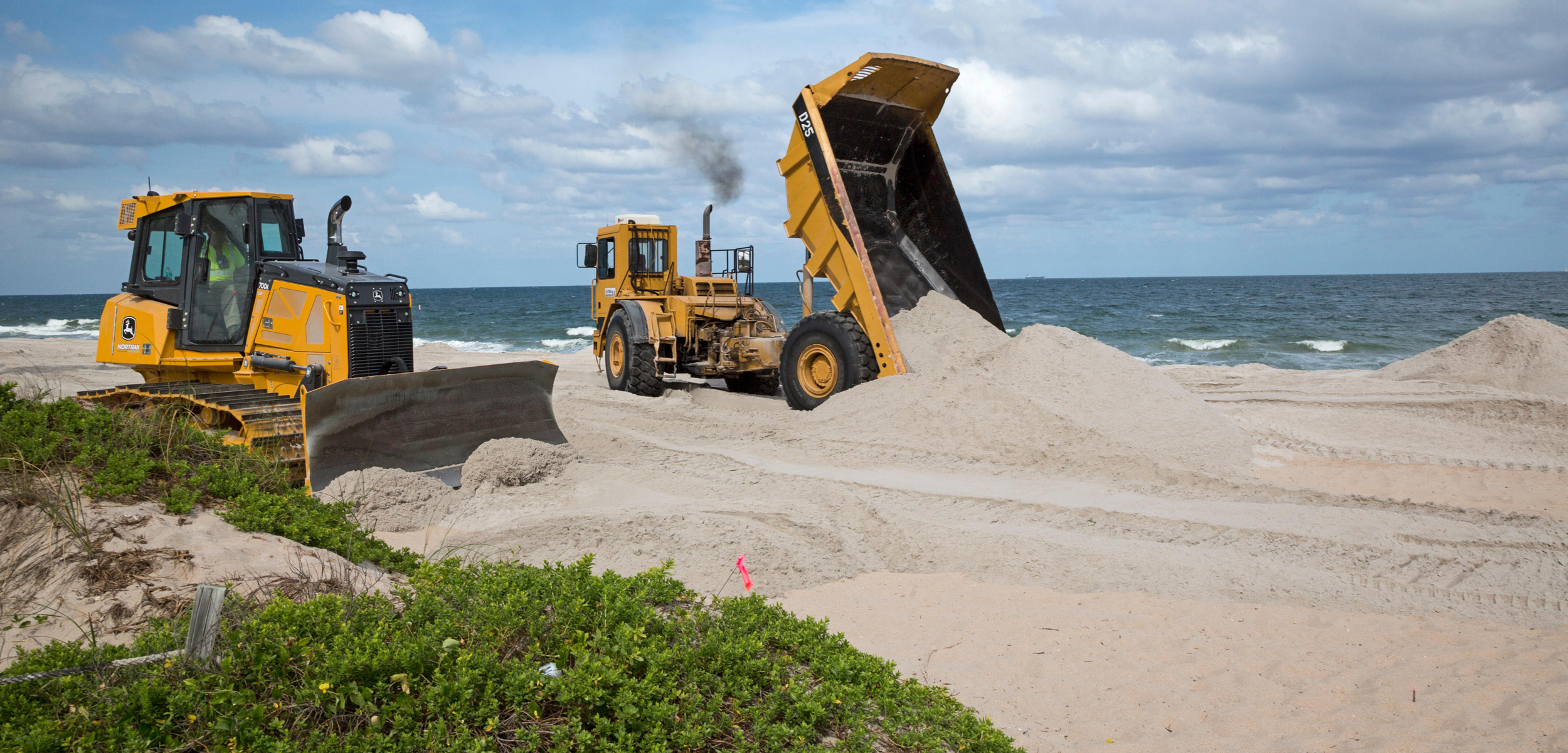Coastal Management
- Created by: Angela03
- Created on: 05-06-18 20:01
Hard engineering
Erosion is a natural process which shapes cliffs. Over time, erosion can cause cliff collapse - therefore the coastline needs to be managed.
Hard engineering involves building artificial structures which try to control natural processes. Each engineering strategy has its advantages and disadvantages.
Sea walls
Concrete walls that are placed at the foot of a cliff to prevent erosion. They are curved to reflect the energy back into the sea.
Advantages
Effective at protecting the base of the cliff.
Sea walls usually have promenades so people can walk along them.
Disadvantages
Waves are still powerful and can break down and erode the sea wall.
Expensive - approximately £2,000 per metre.
Rock armour
Large boulders placed at the foot of a cliff. They break the waves and absorb their energy.
Advantages
Cheaper than a sea wall and easy to maintain.
Can be used for fishing.
Disadvantages
They look different to the local geology, as the rock has been imported from other areas.
The rocks are expensive to transport.

Gabions
Rocks are held in mesh cages and placed in areas affected by erosion.
Advantages
Cheap - approximately £100 per metre.
Absorbs wave energy.
Disadvantages
Not very strong.
Looks unnatural.
Groynes
Wooden or rock structures built out at right angles into the sea.
Advantages
Builds a beach - which encourages tourism.
They trap sediment being carried by longshore drift.
Disadvantages
By trapping sediment it starves beaches further down the coastline, increasing rates of erosion elsewhere.
They look unattractive.

Soft engineering
Soft engineering does not involve building artificial structures, but takes a more sustainable and natural approach to managing the coast. Each strategy has its advantages and disadvantages for use.
Beach nourishment
Sand is pumped onto an existing beach to build it up.
Advantages
Blends in with the existing beach.
Larger beaches appeal to tourists.
Disadvantages
Needs to be constantly replaced.
The sand has to be brought in from elsewhere.

Reprofiling
The sediment is redistributed from the lower part of the beach to the upper part of the beach.
Advantages
Cheap and simple.
Reduces the energy of the waves.
Disadvantages
Only works when wave energy is low.
Needs to be repeated continuously.
Dune nourishmnet
Marram grass planted on sand dunes stabilises the dunes and helps to trap sand to build them up.
Advantages
Relatively cheap.
Maintains a natural-looking coastline.
Disadvantages
Can be damaged by storm waves.
Areas have to be zoned off from the public, which is unpopular.
Managed retreat
Managed retreat is the controlled flooding of low-lying coastal areas. If an area is at high risk of erosion, managed retreat could be an option. It usually occurs where the land is of low value, for example farm land.
Advantages
This is a cheap option compared to paying for sea defences.
Creates a salt marsh which can provide habitats for wildlife and a natural defence against erosion and flooding.
Salt marshes are diverse ecosystems supporting many species.
Disadvantages
Land is lost as it is reclaimed by the sea.
Landowners need to be compensated - this can cost between £5,000 - £10,000 per hectare.
Case study: Lyme Regis
Lyme Regis is a small coastal town on the south coast of England. It i a very popular tourist destination during the summer when the population increases from 4,000 to 15,000
Lyme Regis has a long history of coastal erosion and landslips. Houses and businesses have been lost. If nothing is done, it's certain that the town and its people will suffer further losses.
Lyme Regis is built on some of the most unstable land in Britain and it's very exposed to the sea - on one of the most actively eroding stretches of coastline.

Case study: Lyme Regis
The protection scheme
The Lyme Regis Coast protection scheme was started by West Dorset District Council in the early 1990s. Most of the money comes from the Department for the Environment, Food and Rural Affairs (DEFRA).
Phase 1: a new sea wall and promenad east of the mouth of the river Lim. It was finished in 1995.
Phase 2: this will protect the foreshore and stabalise the land behind immediately behind it. Work started in 2005, and will cost £17 million.
Further phases are being planned. So the work wil go on for many years yet.
The aim of the scheme is to provide long-term protection for homes and buisnesses in the town, and at the same time to protect the coast and the special naural enviornment that makes Lyme Regis so attractive to tourists.
Related discussions on The Student Room
- A-level Geography NEA »
- Geography NEA : Coasts »
- Geography NEA Title (coastal flooding) »
- Geography NEA »
- Geography NEA Ideas »
- A-Level Geography »
- Geography NEA Literature Review »
- Coastal field work »
- Edexcel A-Level Geography Paper 1 | [17th May 2023] Exam Chat »
- case studies for ocr gcse geography b »
Comments
No comments have yet been made